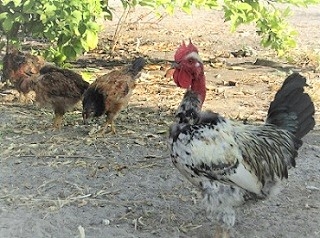
While the poultry business in Namibia is on the increase as a result of the high demand for non-red meat, and eggs, the problems caused by chicken diseases are the major challenges in this sector.
This was said by Mr Hanks Saisai, Agribank’s technical advisor for crops and poultry, in his regular fortnight information sharing statement.
Saisai, an expert in his field, says that respiratory diseases in chickens can kill a poultry business if not attended to quickly.
“A respiratory disease is one that affects the sinuses which is an area located between the eyes and the beak, as well as the windpipe and lungs of any living organism. In chickens the main causes of respiratory diseases are usually germs (such as fungi, viruses, and bacteria) and housing shortfalls such as poor ventilation that results in ammonia build up, draughts and excessive dust,” Saisai says.
For a chicken farmer, there are certain symptoms that can be observed in live chickens. The most common signs of respiratory diseases are usually difficulty in breathing, discharge from the eyes and nostrils, sneezing and swollen sinuses.
“The sign in dead chicken can include the blockage of the nasal passage, redness on the inside of the windpipe or excess mucus in the windpipe.
“Additionally, when a farmer finds it hard to tell whether chickens died from respiratory diseases, it is always advisable to consult a veterinarian for a post-mortem examination accompanied with laboratory tests to confirm the respiratory diseases,” he explains.
Respiratory diseases are classified by the causing agent and usually some diseases such as Newcastle Disease (NCD), Infectious Bronchitis (IB), Infectious Laryngotracheitis (ILT) and Pneumovirus are caused by viruses.
Diseases such as Mycoplasma Gallisepticum (MG) and Infectious Coryza (IC) are caused by bacteria.
“Aspergillosis (Brooder Pneumonia) is a common fungal disease that causes respiratory problems in chickens, sources of which may include moldy, wet feed; wet bedding; or mold on hatching eggs.
“When chickens are affected by respiratory diseases, they tend to have a decline in egg production, loss of appetite and consequently slow growth. Respiratory diseases that are caused by viruses cannot be treated and usually results in mortalities.”
Bacterial and fungal respiratory diseases can be treated using antibiotics such as Doxymax, Teramycine, SWA-DOXY-MYCIN and other poultry friendly antibiotics recommended by veterinarians.
“Lastly, for a farmer to control and prevent the occurrence of respiratory diseases, it is important to ensure that the chicken house is cleaned thoroughly to ensure that there is no ammonia build-up and accumulation of dust.
“Additionally, a regular vaccination program must be implemented to further reduce the possibility of respiratory diseases.”
In the photo: Oshiwambo chicken.







